This document discusses functions in math and Python. It defines a function in math and shows an example function. It then defines a function in Python as a block of reusable code that takes parameters, performs operations, and returns a value. It discusses benefits like simplifying code and reusing code. It shows how to define a function in Python using the def keyword and how to call a function by its name. It defines parameters as variable names in a function definition and arguments as the actual values passed when calling a function. It provides an example of a function that takes name and age as parameters and returns a greeting string. It also discusses assigning default values to parameters. At the end it provides examples of functions to write like counting letters in

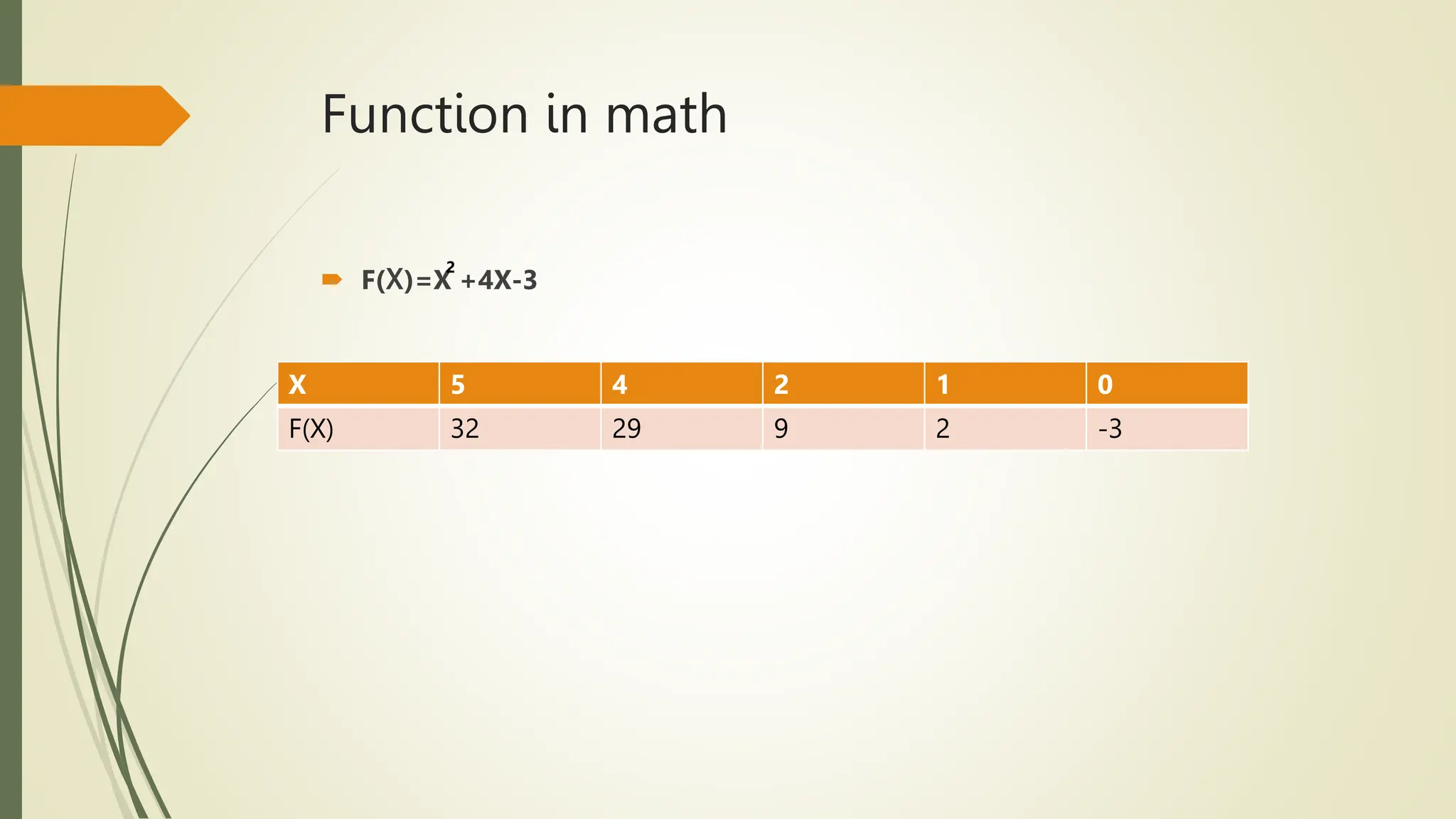
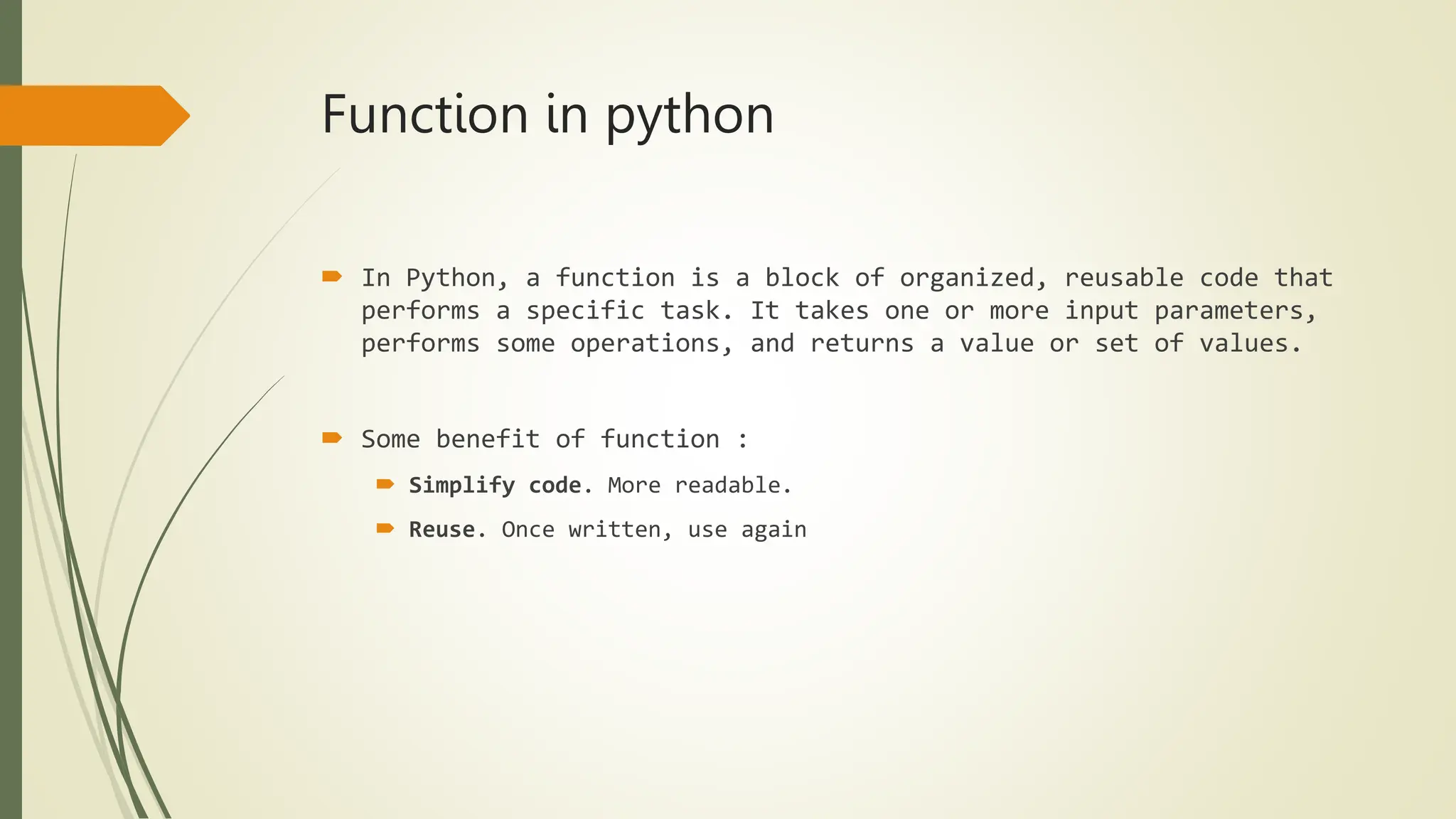
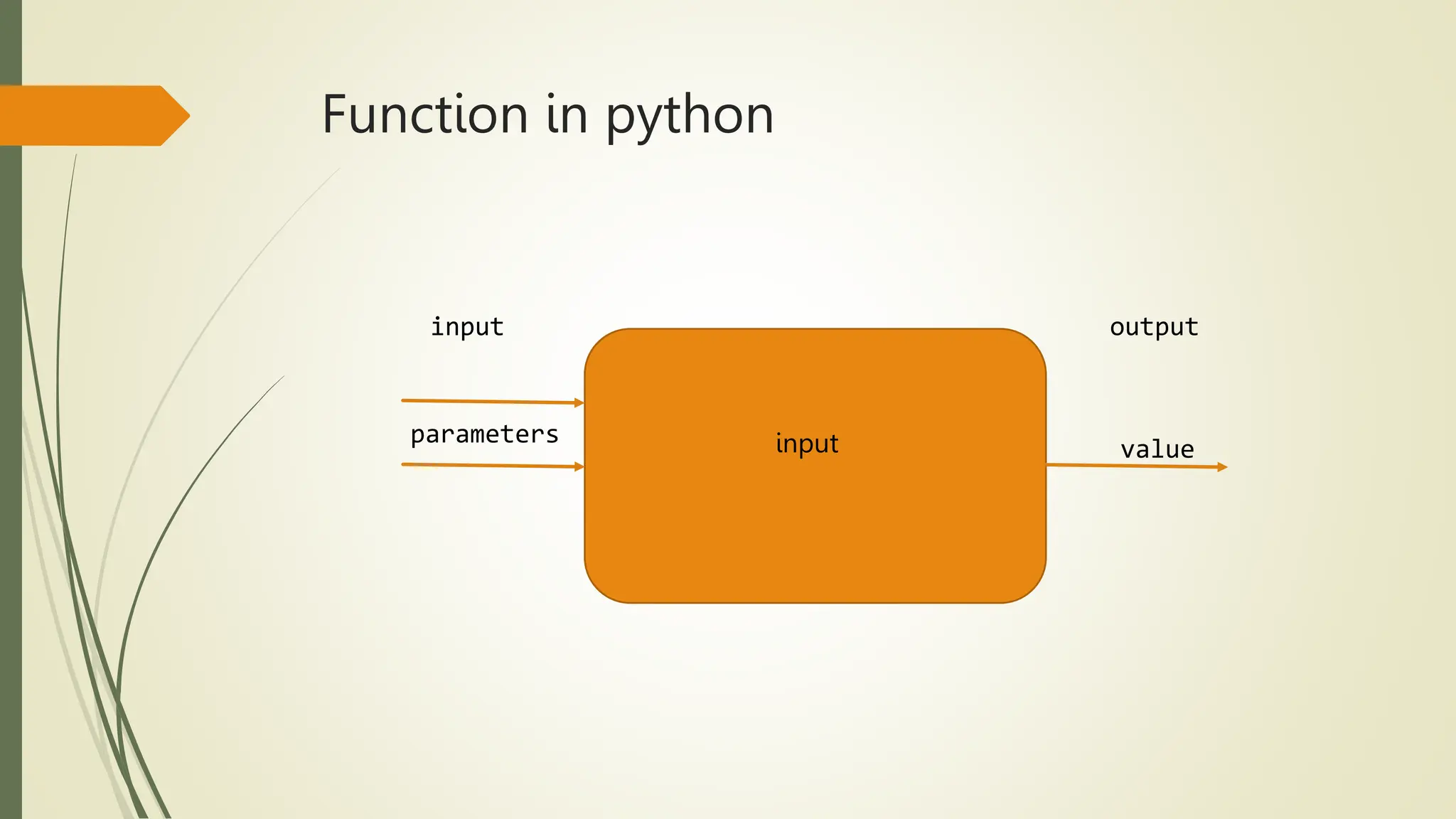
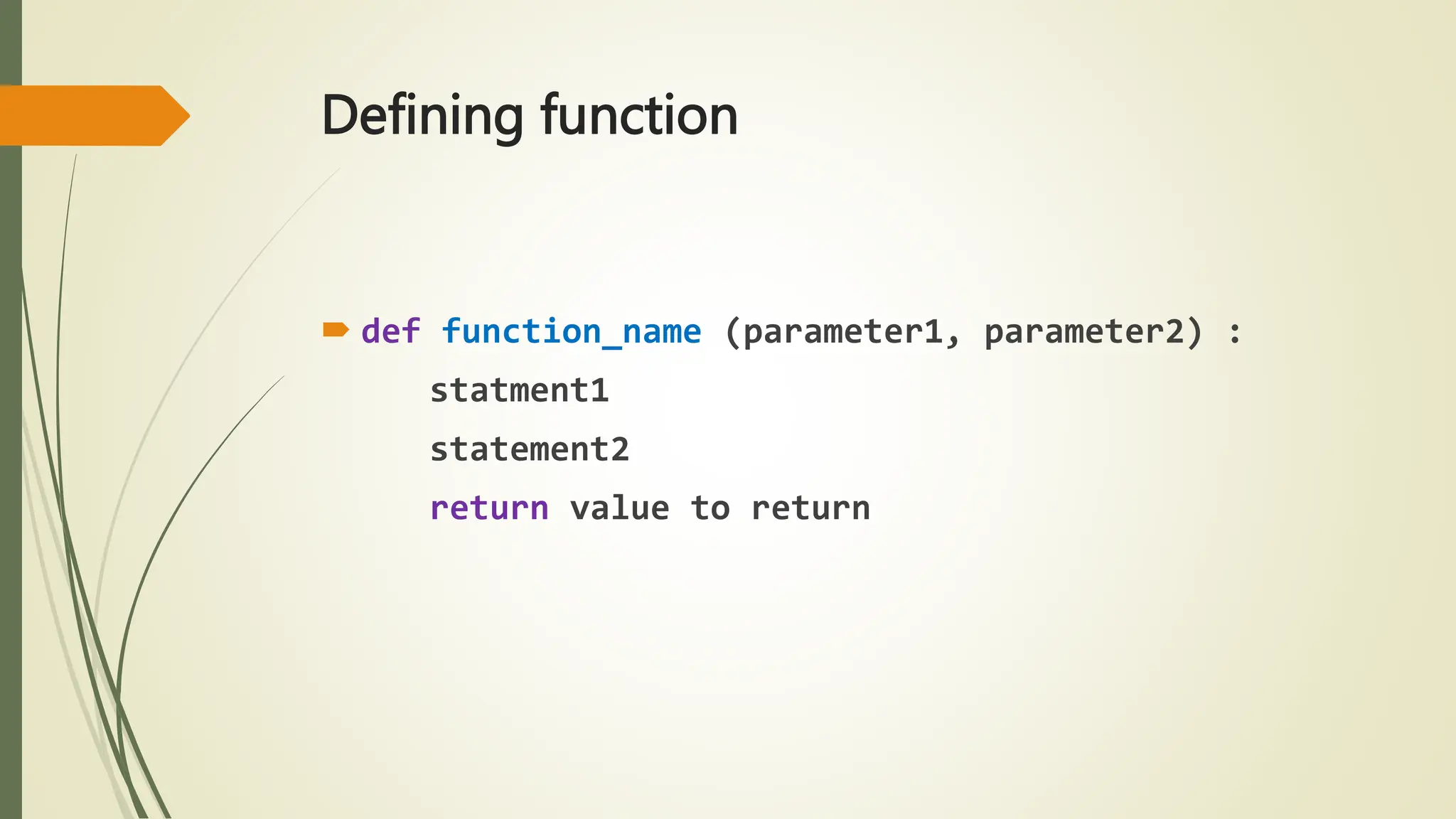
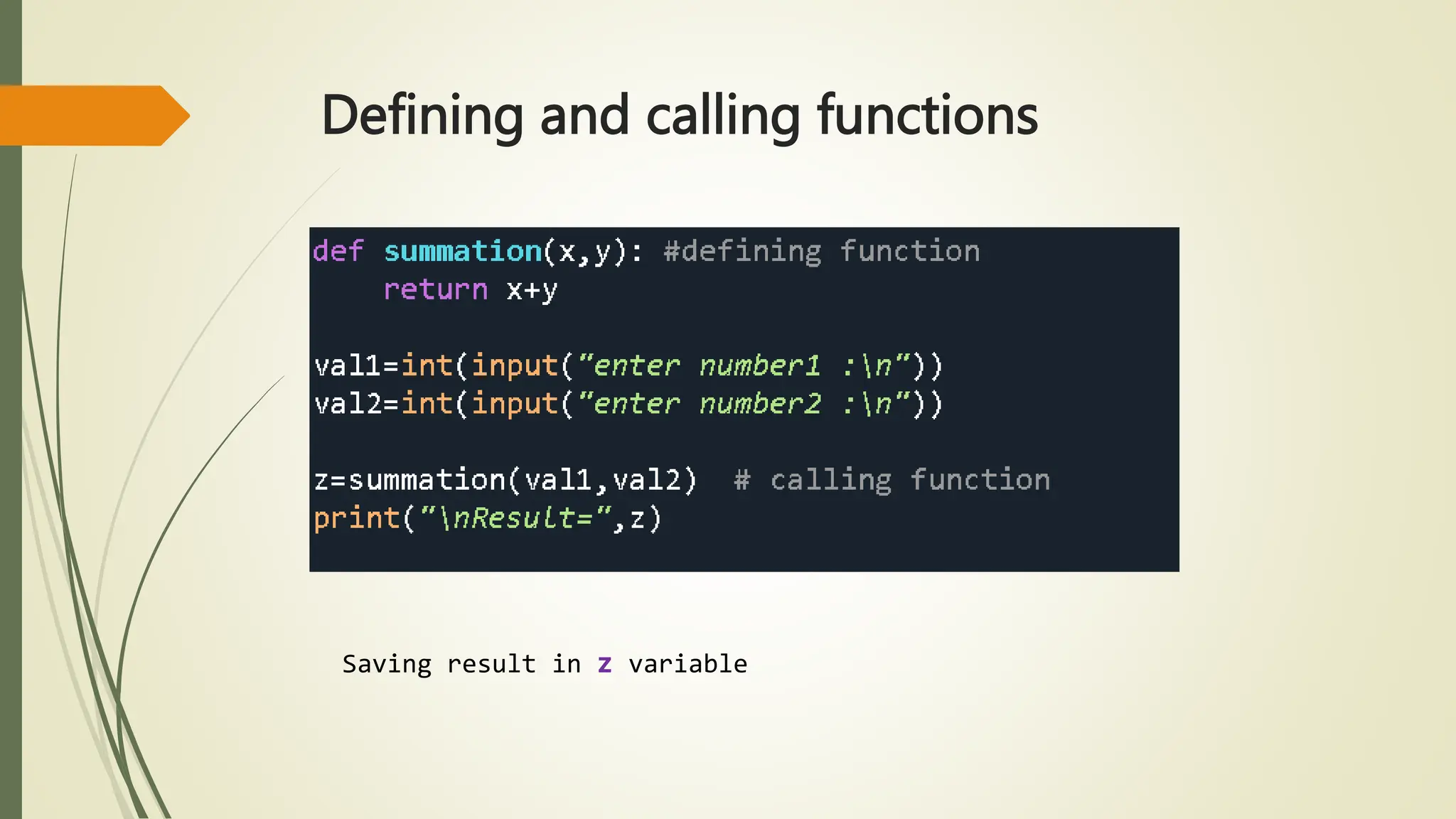
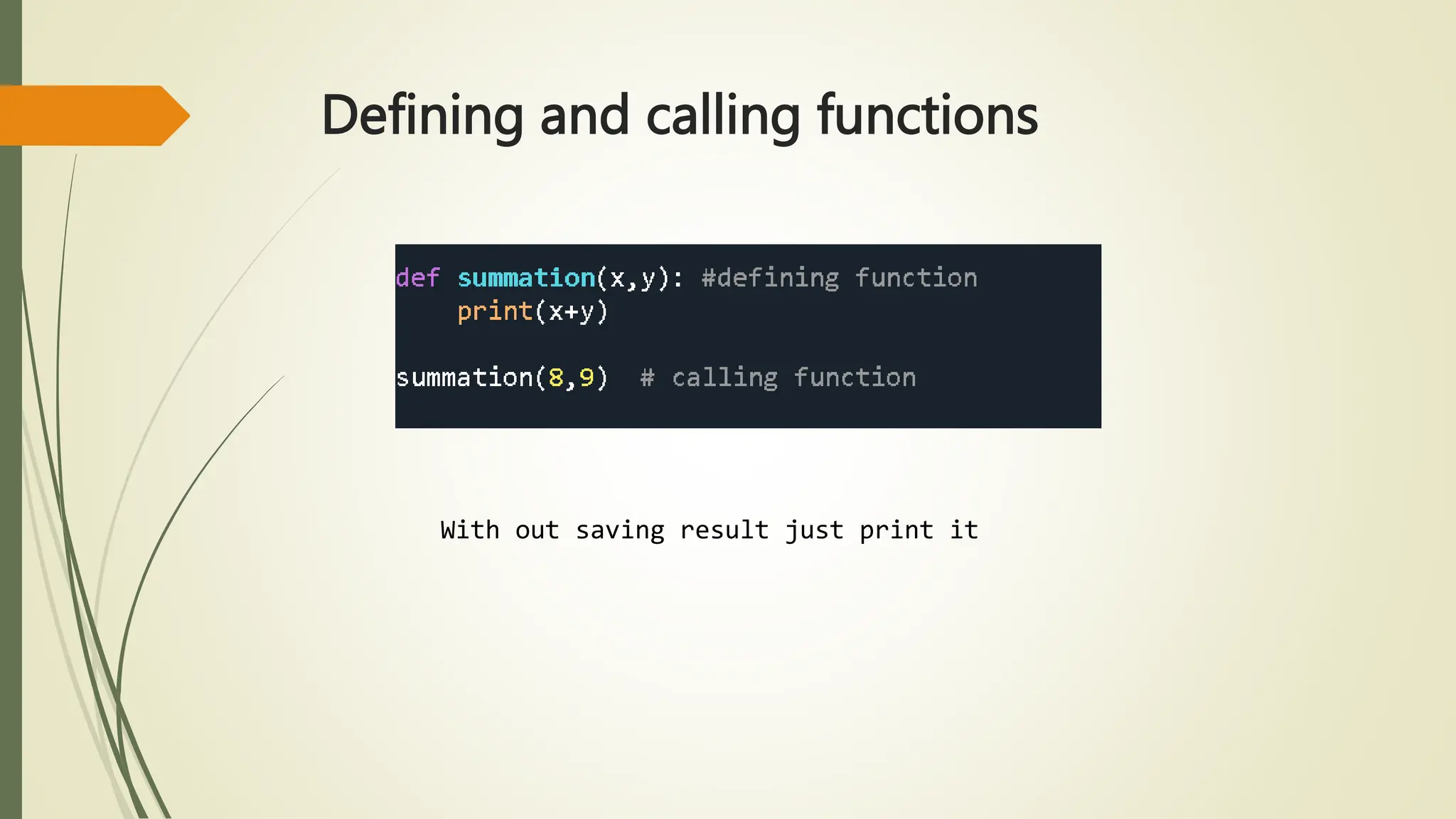
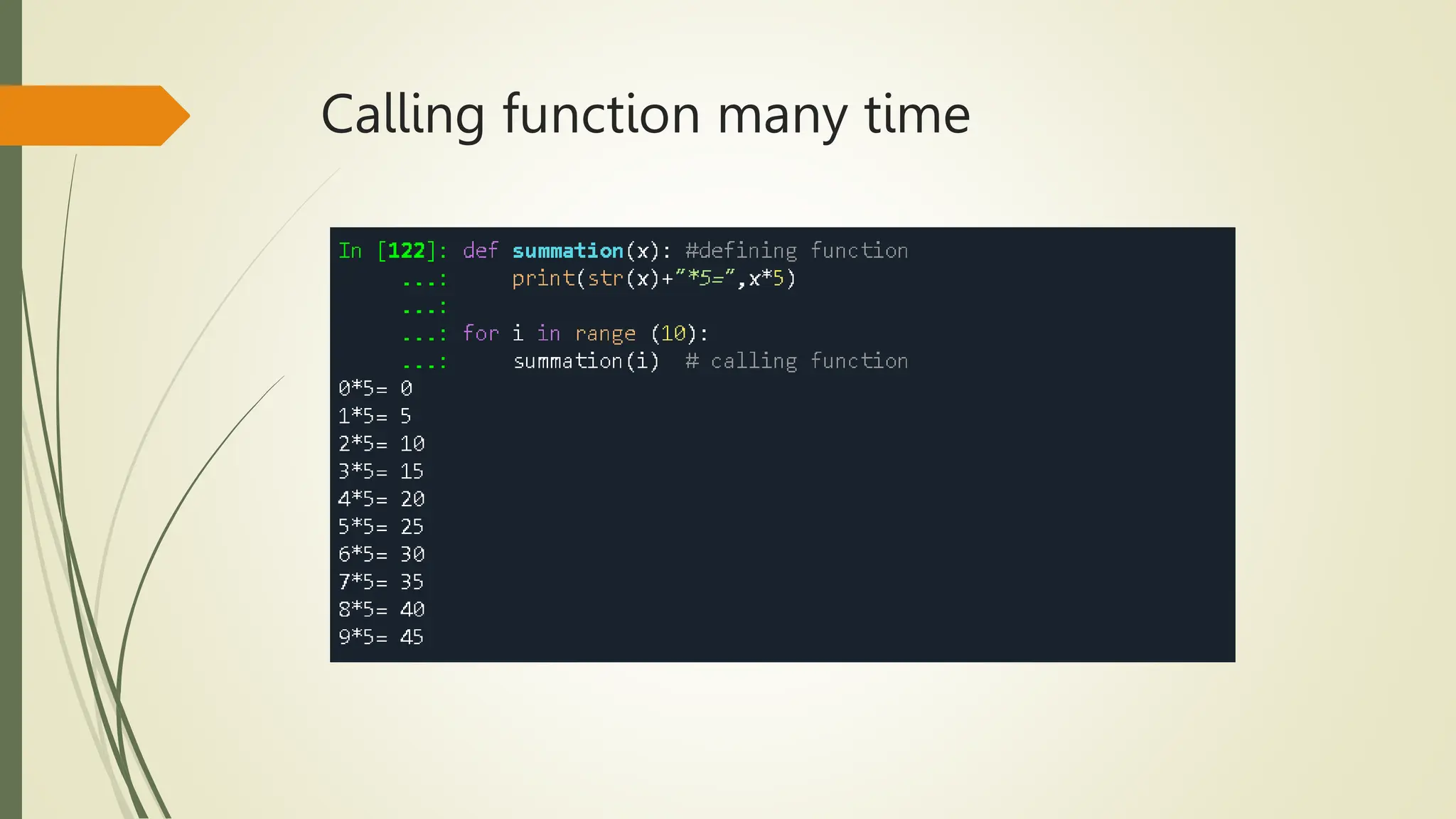
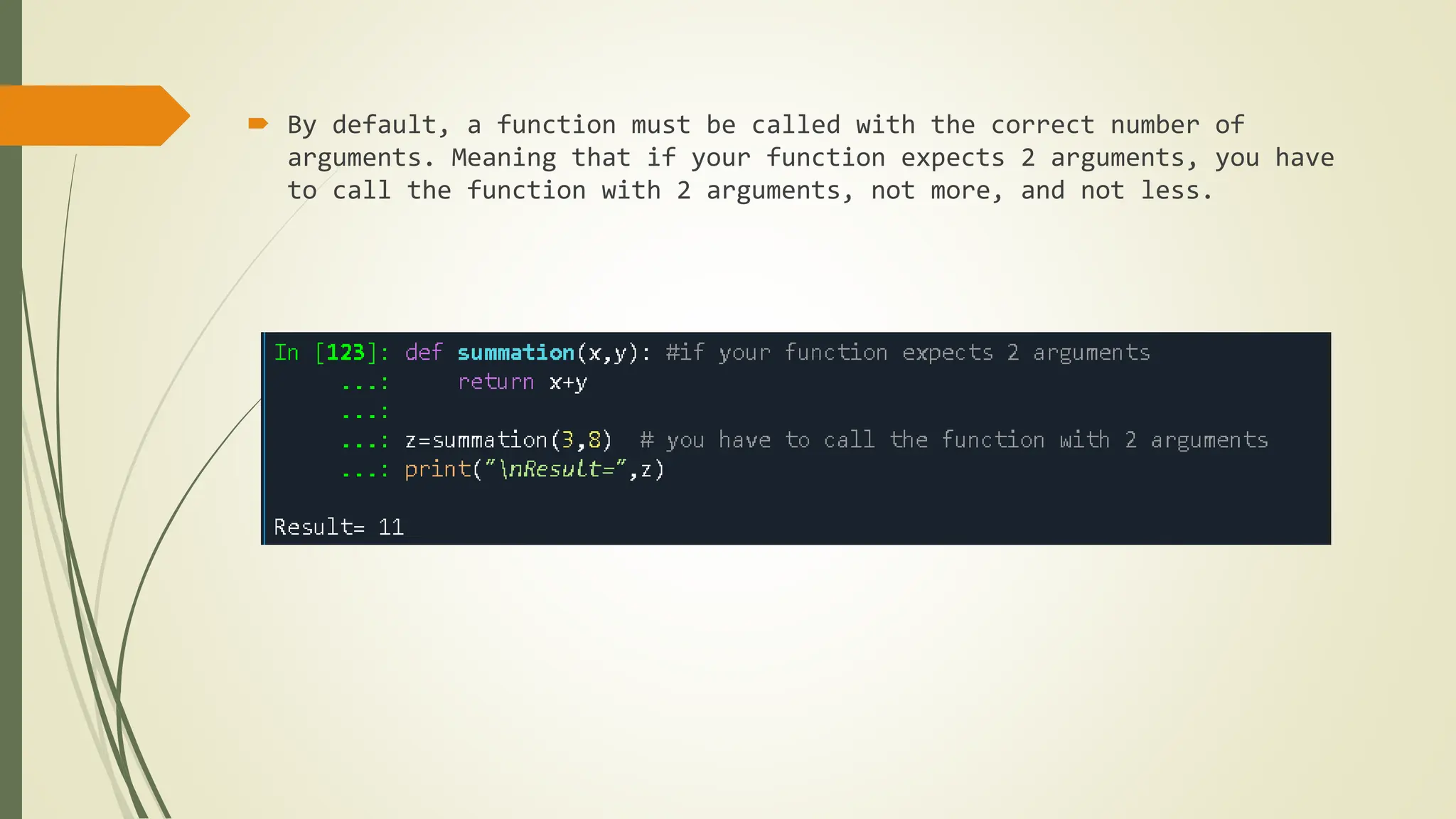
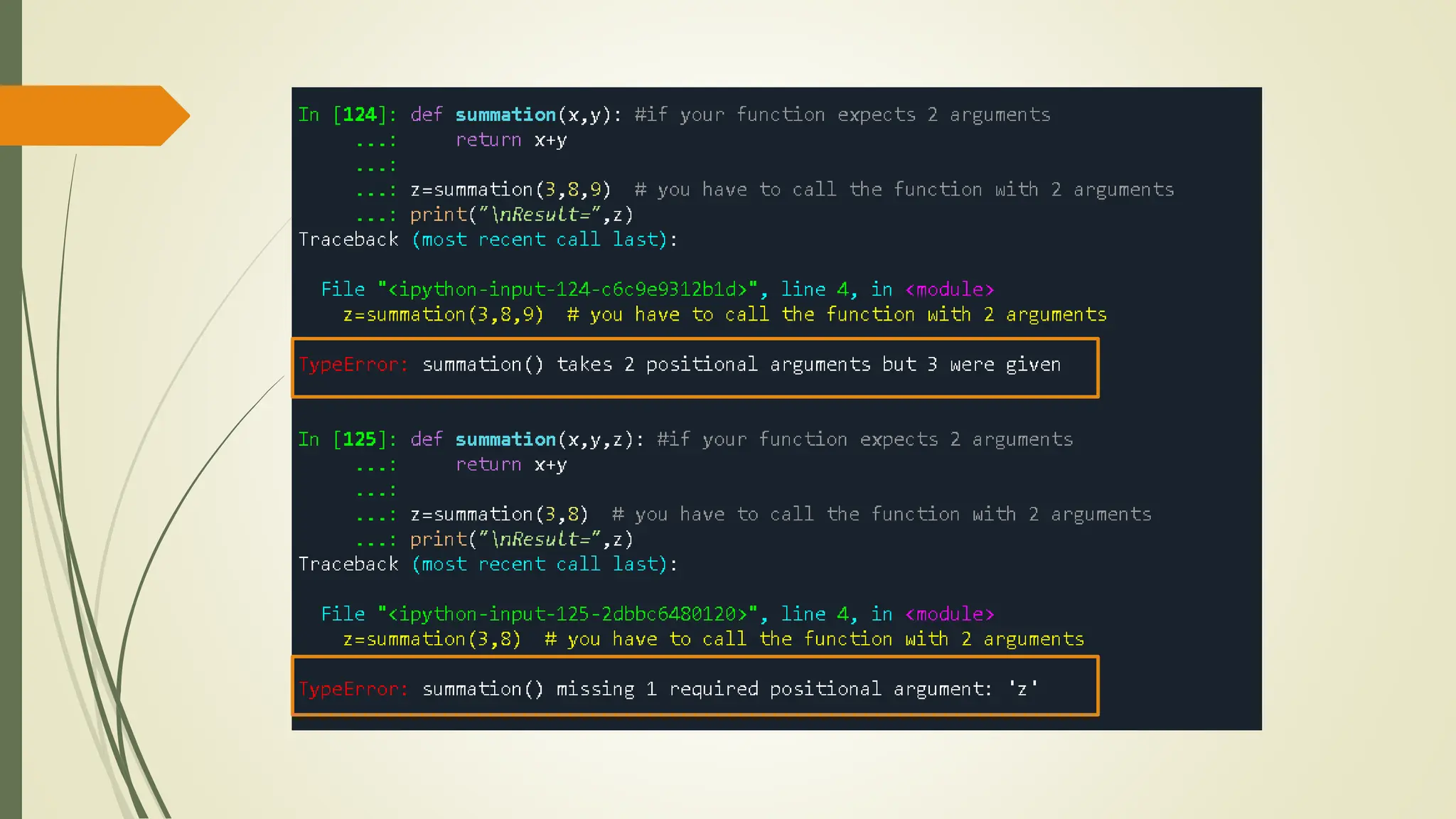
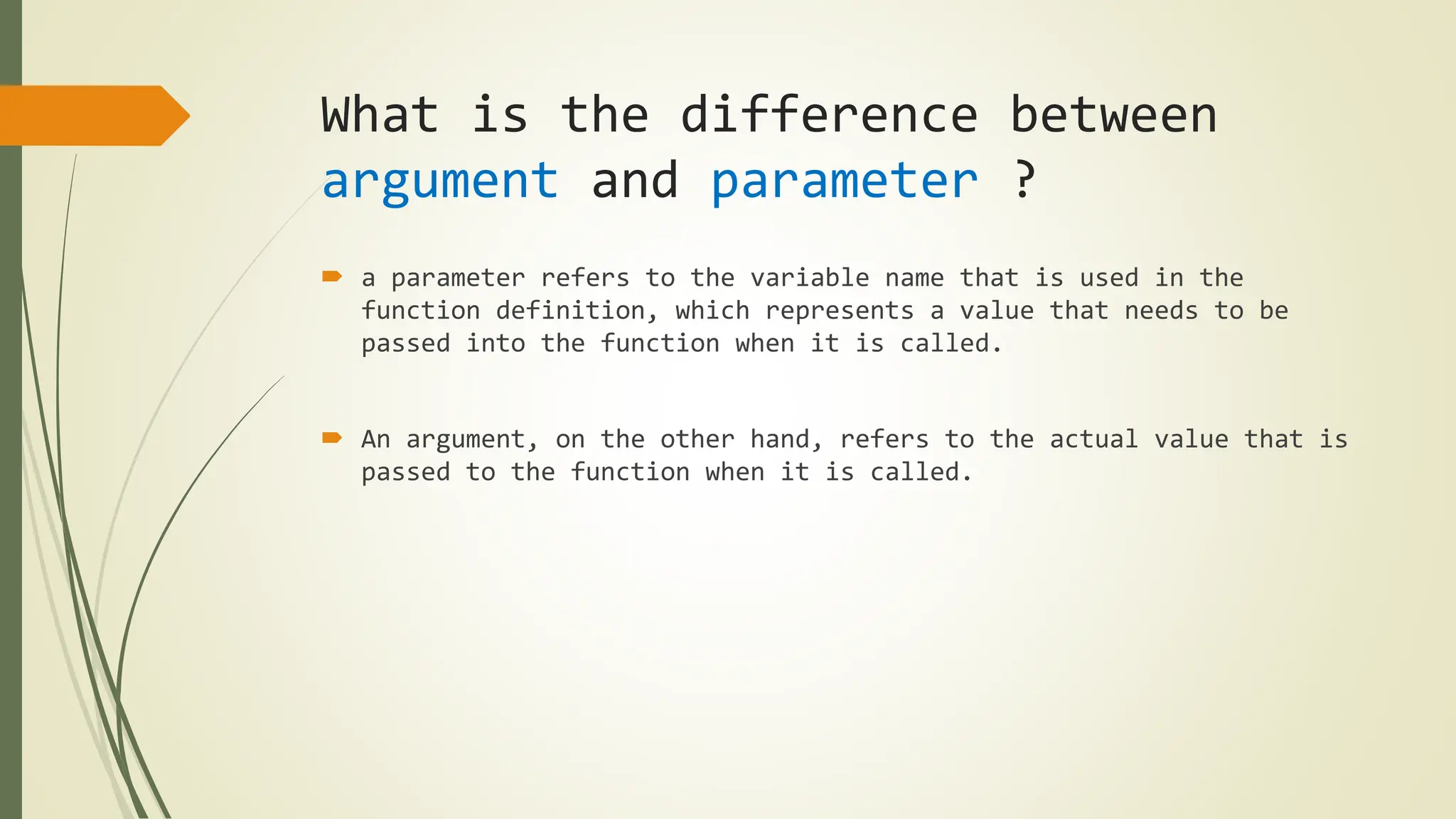
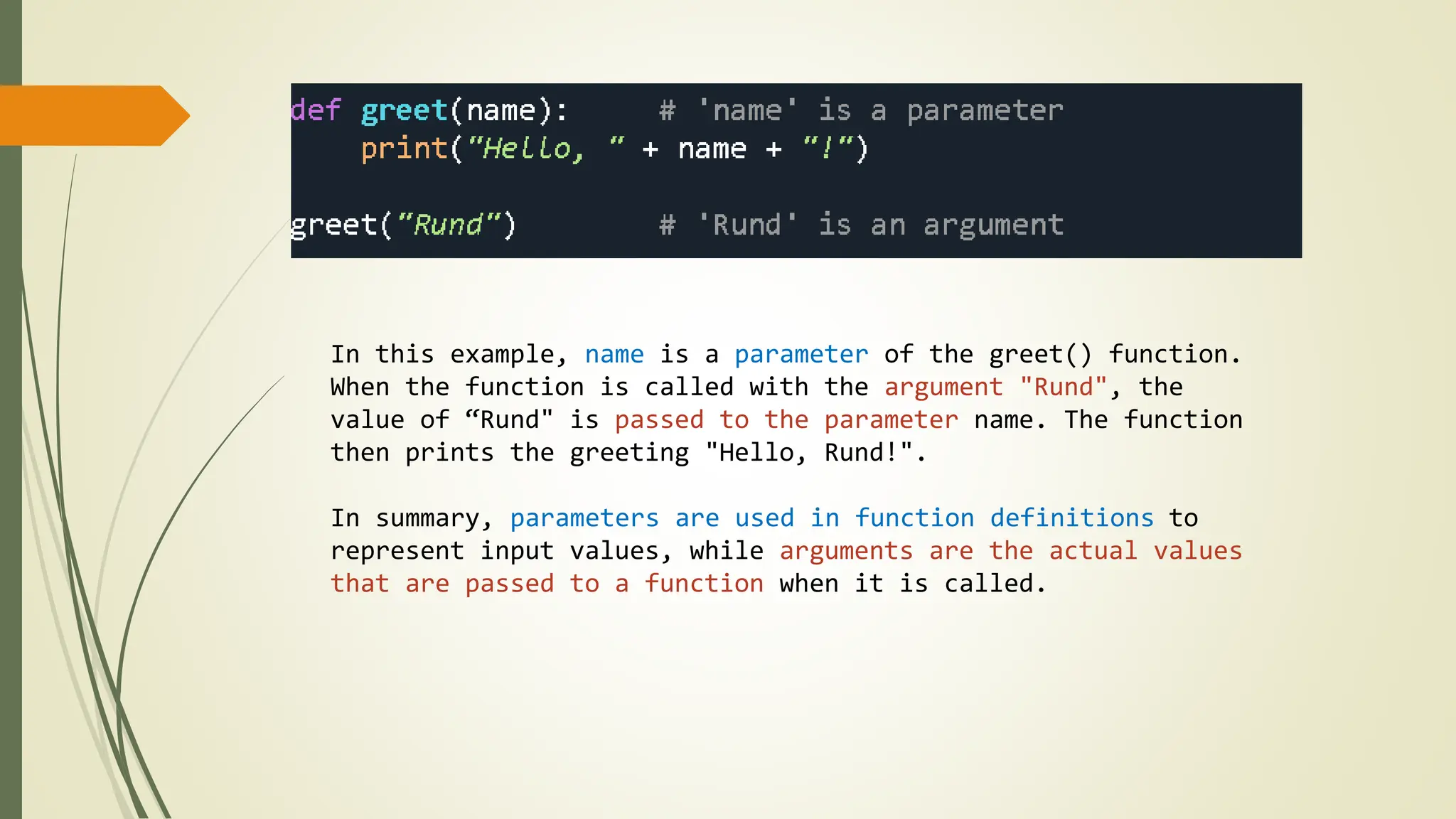
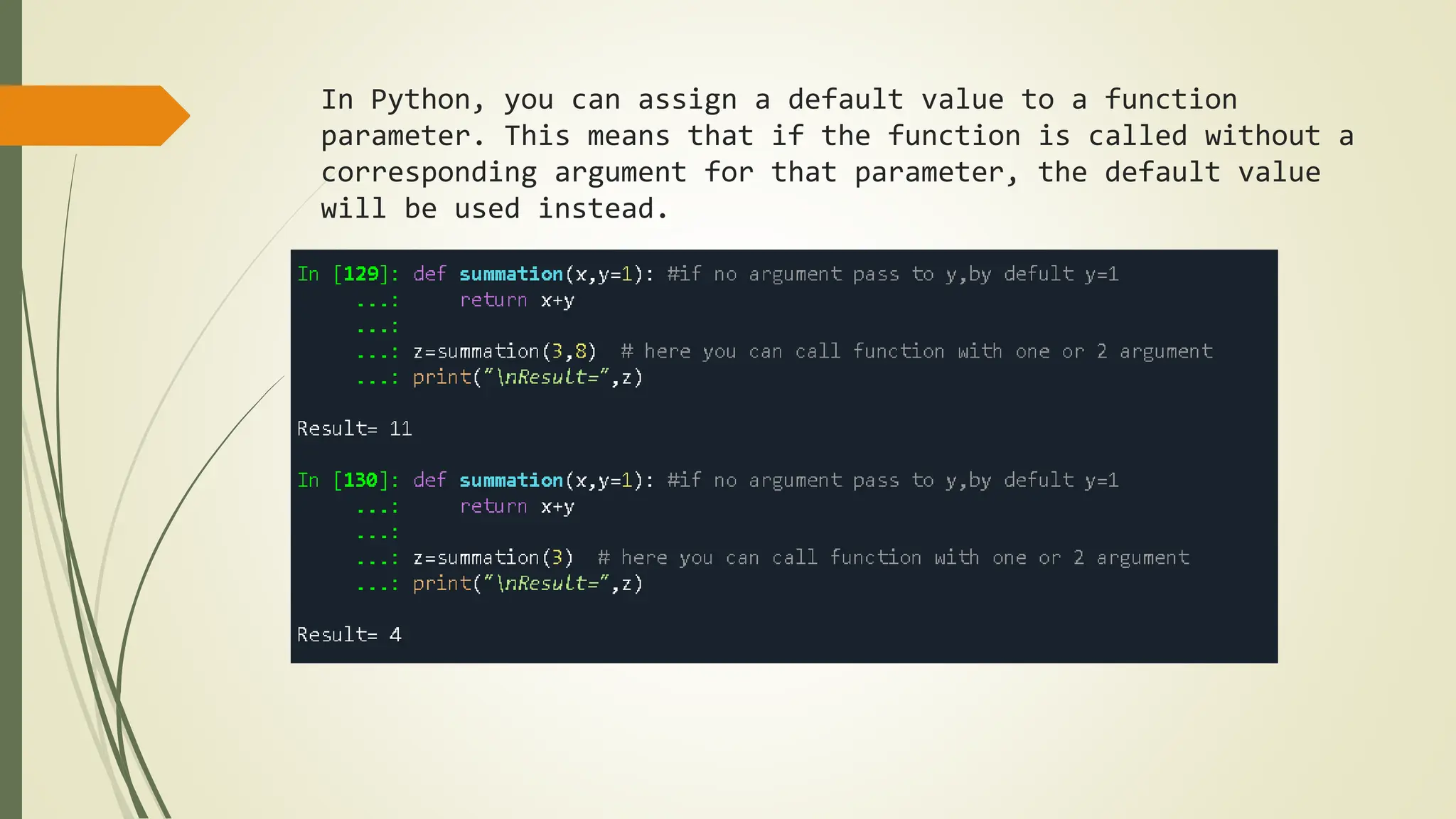
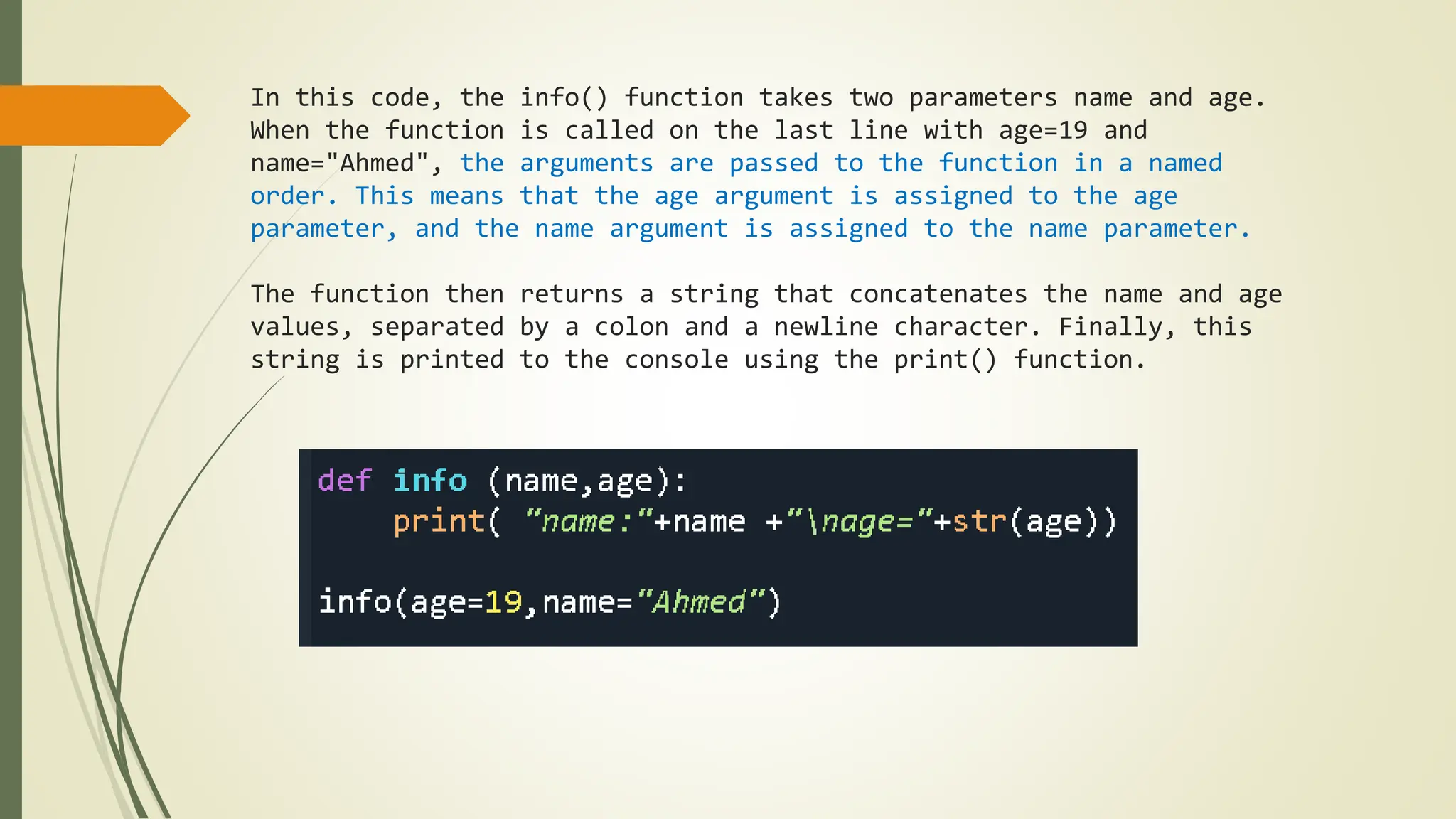
![Task 1
Write a Python function that accepts a string and counts the number of upper and
lower case letters.
Sample String : 'The quick Brow Fox'
Expected Output :
No. of Upper case characters : 3
No. of Lower case Characters : 12
Write a Python program to print the even numbers from a given list.
Sample List : [1, 2, 3, 4, 5, 6, 7, 8, 9]
Expected Result : [2, 4, 6, 8]](https://image.slidesharecdn.com/function-240308200700-41ab22ba/75/function-in-python-programming-languges-pptx-15-2048.jpg)
![Task 2
Write a Python function that takes a list and returns a new list with distinct
elements from the first list.
Sample List : [1,2,3,3,3,3,4,5]
Unique List : [1, 2, 3, 4, 5]](https://image.slidesharecdn.com/function-240308200700-41ab22ba/75/function-in-python-programming-languges-pptx-16-2048.jpg)
![Task 3
Write a Python program to print the even numbers from a given list.
Sample List : [1, 2, 3, 4, 5, 6, 7, 8, 9]
Expected Result : [2, 4, 6, 8]](https://image.slidesharecdn.com/function-240308200700-41ab22ba/75/function-in-python-programming-languges-pptx-17-2048.jpg)